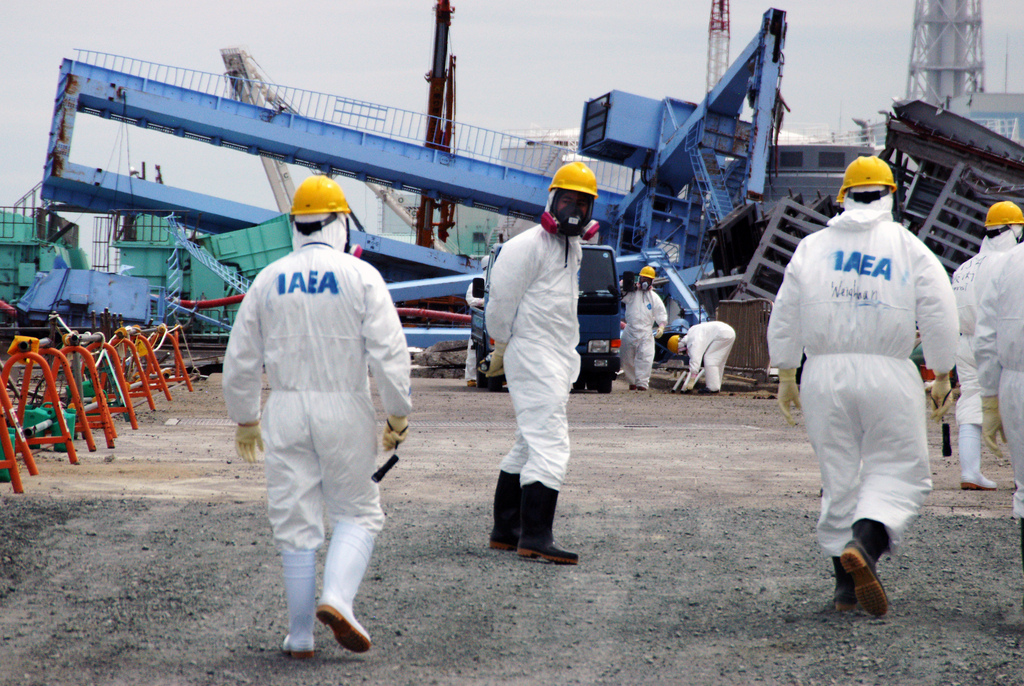Kyushu Electric Power Co. to restart reactor No. 2 despite public protest
10/05/2015 / By Chris Draper

The Kyushu Electric Power Co. is defying public protest. The company decided that it will restart reactor No. 2 at the Sendai complex on Oct. 15, making it the second reactor to be restarted since the Fukushima Daiichi disaster in 2011.(1)
Kyushu Electric reported its planned to restart the reactor to the Nuclear Regulation Authority on Friday. Reactor No. 1 resumed operations back in August and was the first nuclear reactor to be restarted in Japan in over four years.(1)
After a massive earthquake launched a tsunami that decimated the Fukushima Daiichi power plant, nuclear reactors throughout Japan were shut down. Most nuclear reactors are not restarted after they have been shut down for more than four years. Nevertheless, the Japanese government has been under economic pressure to restart the reactors, since the country has no fossil fuel resources of its own. Japan must import approximately 84 percent of its fuel, reports the World Nuclear Organization.(2)
Japanese government thirsty for energy
Prior to the Fukushima disaster, Japanese energy planners were hoping to expand the nation’s nuclear industry to provide at least 50 percent of the nation’s primary energy in 2100; it was only 10 percent back in 2008. As would be expected, the Fukushima disaster disrupted these plans.
The nuclear meltdown, and the shut down of the remaining nuclear plants, left Japan thirsty for energy. Power costs spiked, LNG use rose by 50 percent, the industry collapsed, thereby causing the government to issue bail outs.
Naoto Kan, Prime Minister of Japan during Fukushima disaster, announced a plan to phase out the country’s reliance on nuclear energy in poverty-stricken areas by 2030. Following a series of scandals, however, Japanese citizens elected a new leader in 2012, Shinzo Abe, who is known for being a savvy business man. Consequently, Abe has been pushing for the reactivation of the reactors for economic reasons, despite public protest.(2)
Japan’s government plans to have nuclear power account for 20 to 22 percent of its total electricity supply by 2030. Prior to the disaster, the government hoped to have nuclear power account for nearly 30 percent of Japan’s total electricity supply. The government states that it needs to rely on nuclear power in order to reduce its greenhouse emissions in the fight against global warming.(2)
Reactors restarted prematurely
Protesters note that there are alternative forms of energy that Japan can rely on and that the Sendai complex is being restarted prematurely. The government claims that it implemented the world’s toughest safety rules that all nuclear reactors must pass before they can be reactivated; however, many fear that these rules aren’t strict enough. At the very least, they’re not being lived up to.
For example, critics note that the Sendai complex is an imminent threat because it resides near an active volcano. Officials have yet to devise a sufficient safety plan in the event of a massive eruption. It’s as if Japan is begging for another Fukushima catastrophe.
Japan is home to hundreds of volcanoes. Earthquakes, tsunamis, and volcanic eruptions plague the country. The Sakurajima volcano is a mere 30 miles away from the Sendai nuclear plant. The Japan Meteorological Agency raised the warning level near Sakurajima from 3 to 4 due to an increase in tectonic plate movement.(3)
Kyushu Electric finished inserting 157 rods into the No. 2 reactor last month. It will begin its final inspections next Friday.(1)
Click here to access more important news from trusted, independent sources.
Sources include:
(1) JapanTimes.co.jp
(3) PRI.org
Submit a correction >>
Tagged Under:
earthquake, Kyushu Electric Power Co., nuclear power, radiation, radioactive waste, Sendai nuclear plant, tsunami, volcano
This article may contain statements that reflect the opinion of the author
RECENT NEWS & ARTICLES
COPYRIGHT © 2017 FUKUSHIMAWATCH.COM
All content posted on this site is protected under Free Speech. FukushimaWatch.com is not responsible for content written by contributing authors. The information on this site is provided for educational and entertainment purposes only. It is not intended as a substitute for professional advice of any kind. FukushimaWatch.com assumes no responsibility for the use or misuse of this material. All trademarks, registered trademarks and service marks mentioned on this site are the property of their respective owners.




















